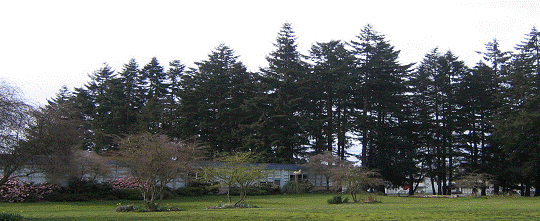
“Choose Reusable” seems simple but the plastics industry will be spending lots of money opposing the referendum slated for the August 18, 2009 Primary Ballot in Seattle. The American Chemistry Council of Arlington , Virginia has raised some $239, 453 to date and 7-Eleven has added $10,000 to the campaign.
Most of this money was spent last year to pay signature gatherers to collect signatures to put the 20 cent bag fee ordinance on the ballot. Expect a lot more money to be spent touting the convenience of throwaway bags that the plastic industry makes money off of but which frequently wind up as litter and waste resources. The plastic bags are made from petroleum.
Mayor Nickels in recently kicking off the campaign to get voters to vote for reusable bags stated in a press release that “
Both paper and plastic disposable bags harm our environment, and every year, residents in Seattle throw out 360 million of them. That’s simply unsustainable. Bringing your own bag is an easy way to make a big impact. This campaign will help shoppers with the toughest part: remembering to bring your reusable bags to the store.”
What is interesting is the number of grocers and other stores that have joined with Nickels in promoting reusable bags at their stores. Here is a list of stores joining the “Choose Reusable” voluntary public-private partnership from the Mayor’s press release: Albertsons, AmazonFresh.com, Bartell Drugs, Cartridge World Seattle, ChicoBag, Fred Meyer, Hilltop Red Apple, JCPenney, Kress IGA Supermarket, Madison Market, Magnolia Thriftway, Metropolitan Market, PCC Natural Markets, Promenade Red Apple, QFC, Safeway, Seattle Lighting, Shoreline Central Market, Supervalu, Target, Town & Country Ballard Market, Town & Country Greenwood Market, Tucker Bags, Unified Grocers, Uwajimaya, Village Market Thriftway, Wal-Mart, and West Seattle Thriftway.
Also supporting the effort is the Seattle Chamber of Commerce. Nickels press release notes that the following “organizations and businesses are donating reusable shopping bags to low-income families through the city or nonprofit organizations: Seattle Public Utilities, Northwest Grocery Association, Tucker Bags, Washington Food Industry, Bartell Drugs, JC Penney, Target, Wal-Mart, AmazonFresh.com, ChicoBag, Cartridge World Seattle, and Seattle Lighting.”
This is a good way to get people used to bringing their own bags. The more people that are already using reusable bags, the more advocates and public examples there will be for supporting the bag fee on the August 18, 2009 Primary.
Reusing bags ultimately says the consumer and the grocery stores money. Bags are not free. Grocery stores buy them and you pay for them in your overall grocery bill. And you pay for them in landfill disposal costs which go up as more waste is thrown away.
Many stores have been selling reusable cloth bags for $1.00 each. Use it 5 times and you will be saving 20 cents each time you use it again after that when the 20 cent bag fee passes. It takes a little while to get in the habit of remembering your bags when you shop. But our family still uses a couple of canvas bags we purchased some 20 years ago from PCC in Seattle.





